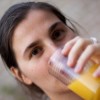 A functional food is commonly defined as a food that provides benefits beyond the basic nutrition provided by that food. The additional benefit is due to a component in the food item that offers physical or biological benefits. As functional foods become increasingly popular in the U.S., it is important to be an informed shopper. This 3-page fact sheet was written by Amanda L. Ford and Wendy J. Dahl, and published by the UF Department of Food Science and Human Nutrition, November 2012.
A functional food is commonly defined as a food that provides benefits beyond the basic nutrition provided by that food. The additional benefit is due to a component in the food item that offers physical or biological benefits. As functional foods become increasingly popular in the U.S., it is important to be an informed shopper. This 3-page fact sheet was written by Amanda L. Ford and Wendy J. Dahl, and published by the UF Department of Food Science and Human Nutrition, November 2012.
http://edis.ifas.ufl.edu/fs210
Category: Health & Nutrition
Spoon Test for Pureed Food (FSHN1211/FS204)
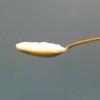 Puréed foods prepared for people with swallowing problems should meet the recommended textural guidelines. Proper texture is the priority when creating purées. A puréed food should have a uniform texture that is “spoon thick” and does not require chewing. It should not be too dry, sticky, lumpy, or thin. Adjustments in thickness may be made according to the individual’s specific needs. This 2-page fact sheet was written by Wendy J. Dahl and Jamila R. Frazier, and published by the UF Department of Food Science and Human Nutrition, November 2012.
Puréed foods prepared for people with swallowing problems should meet the recommended textural guidelines. Proper texture is the priority when creating purées. A puréed food should have a uniform texture that is “spoon thick” and does not require chewing. It should not be too dry, sticky, lumpy, or thin. Adjustments in thickness may be made according to the individual’s specific needs. This 2-page fact sheet was written by Wendy J. Dahl and Jamila R. Frazier, and published by the UF Department of Food Science and Human Nutrition, November 2012.
http://edis.ifas.ufl.edu/fs204
The Food Groups of MyPlate (FCS8873/FY1077)
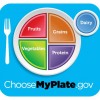 Plan your food group choices wisely. Choose nutrient-rich foods that are fat-free or low-fat and low in added sugars. This 3-page fact sheet gives an overview of the MyPlate food groups. Written by Glenda L. Warren and Jennifer Walsh, and published by the UF Department of Family Youth and Community Sciences, Novemeber 2012.
Plan your food group choices wisely. Choose nutrient-rich foods that are fat-free or low-fat and low in added sugars. This 3-page fact sheet gives an overview of the MyPlate food groups. Written by Glenda L. Warren and Jennifer Walsh, and published by the UF Department of Family Youth and Community Sciences, Novemeber 2012.
http://edis.ifas.ufl.edu/fy1077
Snack Attacks: Be Prepared (FCS8865/FY1020)
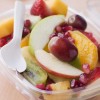 Children may feel hungry or have a “snack attack” right after school each day. Plan ahead and have ready-to-eat healthful foods available for children to enjoy. Use the MyPlate food groups as a guide to prepare snacks that will help children meet their nutritional needs. This 2-page fact sheet was written by Glenda L. Warren and Jennifer Walsh, and published by the UF Department of Family Youth and Community Sciences, November 2012.
Children may feel hungry or have a “snack attack” right after school each day. Plan ahead and have ready-to-eat healthful foods available for children to enjoy. Use the MyPlate food groups as a guide to prepare snacks that will help children meet their nutritional needs. This 2-page fact sheet was written by Glenda L. Warren and Jennifer Walsh, and published by the UF Department of Family Youth and Community Sciences, November 2012.
http://edis.ifas.ufl.edu/fy1020
Ayude a su sistema digestivo: Entendiendo los probioticos (FSHN1111S/FS203)
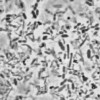 Los probióticos son conocidos como “bacterias buenas.” Frecuentemente cuando pensamos en las bacterias, pensamos en las que causan enfermedades. Aunque hay muchas bacterias que causan enfermedades, hay muchas otras que son benéficas para nuestra salud. Los probióticos son microorganismos vivos, los cuales cuando son administrados en cantidades adecuadas, proveen un beneficio para la salud. This 3-page fact sheet was written by Wendy J. Dahl and Volker Mai, and published by the UF Department of Food Science and Human Nutrition, October 2012. http://edis.ifas.ufl.edu/fs203
Los probióticos son conocidos como “bacterias buenas.” Frecuentemente cuando pensamos en las bacterias, pensamos en las que causan enfermedades. Aunque hay muchas bacterias que causan enfermedades, hay muchas otras que son benéficas para nuestra salud. Los probióticos son microorganismos vivos, los cuales cuando son administrados en cantidades adecuadas, proveen un beneficio para la salud. This 3-page fact sheet was written by Wendy J. Dahl and Volker Mai, and published by the UF Department of Food Science and Human Nutrition, October 2012. http://edis.ifas.ufl.edu/fs203
Ayude a su sistema digestivo: Entendiendo la microbiota y los prebioticos (FSHN1110S/FS202)
 Todos nosotros tenemos bacterias buenas por todo nuestro cuerpo. Una población grande de bacterias vive en nuestro tracto gastrointestinal, mayormente en el colon (intestino grueso). Esto se conoce como nuestra flora intestinal. This 2-page fact sheet was written by Wendy J. Dahl and Volker Mai, and published by the UF Department of Food Science and Human Nutrition, October 2012.
Todos nosotros tenemos bacterias buenas por todo nuestro cuerpo. Una población grande de bacterias vive en nuestro tracto gastrointestinal, mayormente en el colon (intestino grueso). Esto se conoce como nuestra flora intestinal. This 2-page fact sheet was written by Wendy J. Dahl and Volker Mai, and published by the UF Department of Food Science and Human Nutrition, October 2012.
http://edis.ifas.ufl.edu/fs202
De compras para la salud: Frijoles, guisantes y lentejas (FSHN1105S/FS201)
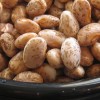 Las legumbres son unos de los alimentos más completos en la naturaleza que proveen una gran variedad de beneficios para la salud. Las legumbres tienen mucha proteína, fibra y vitaminas. También son bajas en grasa, no tienen colesterol y son muy bajas en grasa saturada. Los frijoles oscuros tienen alto contenido de antioxidantes. This 4-page fact sheet was written by Lakshmi Mahan, Lauren Foster y Wendy J. Dahl, and published by the UF Department of Food Science and Human Nutrition, October 2012.
Las legumbres son unos de los alimentos más completos en la naturaleza que proveen una gran variedad de beneficios para la salud. Las legumbres tienen mucha proteína, fibra y vitaminas. También son bajas en grasa, no tienen colesterol y son muy bajas en grasa saturada. Los frijoles oscuros tienen alto contenido de antioxidantes. This 4-page fact sheet was written by Lakshmi Mahan, Lauren Foster y Wendy J. Dahl, and published by the UF Department of Food Science and Human Nutrition, October 2012.
http://edis.ifas.ufl.edu/fs201
De compras para la salud: Leche (FSHN1109S/FS200)
 La leche ofrece una variedad de nutrientes esenciales que el cuerpo necesita para mantenerse saludable. Estos nutrientes incluyen el calcio, la vitamina D, la vitamina A y el potasio. La leche también contiene proteína de alta calidad que ayuda a satisfacer las necesidades de su cuerpo. This 4-page fact sheet was written by Wendy J. Dahl and Lauren Foster, and published by the UF Department of Food Science and Human Nutrition, October 2012.
La leche ofrece una variedad de nutrientes esenciales que el cuerpo necesita para mantenerse saludable. Estos nutrientes incluyen el calcio, la vitamina D, la vitamina A y el potasio. La leche también contiene proteína de alta calidad que ayuda a satisfacer las necesidades de su cuerpo. This 4-page fact sheet was written by Wendy J. Dahl and Lauren Foster, and published by the UF Department of Food Science and Human Nutrition, October 2012.
http://edis.ifas.ufl.edu/fs200
De compras para la salud: Yogurt (FSHN1201S/FS198)
 El yogur se ha convertido en un producto muy popular en la dieta de los Estadounidenses y se ha apoderado de la mayoría de la sección de los productos lácteos en muchas tiendas. ¿Alguna vez se ha preguntado qué es el yogur, cuáles son los beneficios para la salud o cuál es la diferencia entre los tipos de yogures? Continúe leyendo para encontrar las respuestas a estas preguntas y para aprender más sobre el yogur.This 3-page fact sheet was written by Stephanie B. Meyer, Ada Medina-Solórzano y Wendy J. Dahl, and published by the UF Department of Food Science and Human Nutrition, October 2012.
El yogur se ha convertido en un producto muy popular en la dieta de los Estadounidenses y se ha apoderado de la mayoría de la sección de los productos lácteos en muchas tiendas. ¿Alguna vez se ha preguntado qué es el yogur, cuáles son los beneficios para la salud o cuál es la diferencia entre los tipos de yogures? Continúe leyendo para encontrar las respuestas a estas preguntas y para aprender más sobre el yogur.This 3-page fact sheet was written by Stephanie B. Meyer, Ada Medina-Solórzano y Wendy J. Dahl, and published by the UF Department of Food Science and Human Nutrition, October 2012.
http://edis.ifas.ufl.edu/fs198
Healthy Eating: Folate (FCS8567/FY066)
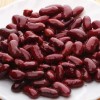 Folate is one of the B vitamins. It is involved in the formation of DNA, the genetic material found in all cells of your body. Folate is an important nutrient for everyone. It is especially important for pregnant and nursing women, growing children, and older adults. Health problems may result if people do not get enough folate. This 2-page fact sheet was written by Linda B. Bobroff, and published by the UF Department of Family Youth and Community Sciences, October 2012.
Folate is one of the B vitamins. It is involved in the formation of DNA, the genetic material found in all cells of your body. Folate is an important nutrient for everyone. It is especially important for pregnant and nursing women, growing children, and older adults. Health problems may result if people do not get enough folate. This 2-page fact sheet was written by Linda B. Bobroff, and published by the UF Department of Family Youth and Community Sciences, October 2012.
http://edis.ifas.ufl.edu/fy066
Healthy Meal Plans (FCS8750/FY522)
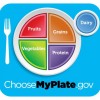 A meal plan is a guide to help you plan daily meals and snacks. It allows you to eat foods you enjoy and that provide a good balance of nutrients for your health. Meal plans can be used by anyone interested in healthy eating. They are very helpful for people who want to manage their weight.This 20-page fact sheet was written by Linda B. Bobroff, and published by the UF Department of Family Youth and Community Sciences, October 2012.
A meal plan is a guide to help you plan daily meals and snacks. It allows you to eat foods you enjoy and that provide a good balance of nutrients for your health. Meal plans can be used by anyone interested in healthy eating. They are very helpful for people who want to manage their weight.This 20-page fact sheet was written by Linda B. Bobroff, and published by the UF Department of Family Youth and Community Sciences, October 2012.
http://edis.ifas.ufl.edu/fy522
De compras para la salud: Guia de comidas congeladas (FSHN1202s/FS199)
 Sin embargo, con la gran variedad de comidas congeladas que están ahora en las tiendas de alimentos, es posible expandir sus opciones de alimentos y seguir consumiendo comidas apetitosas y saludables. La clave está en saber qué buscar cuando está comprando. Para aprender como escoger comidas deliciosas que satisfagan sus preferencias en cuanto al sabor y las necesidades de salud, continúe leyendo. This 4-page fact sheet was written by Sarah A. Glenny and Wendy J. Dahl, and published by the UF Department of Food Science and Human Nutrition, October 2012.
Sin embargo, con la gran variedad de comidas congeladas que están ahora en las tiendas de alimentos, es posible expandir sus opciones de alimentos y seguir consumiendo comidas apetitosas y saludables. La clave está en saber qué buscar cuando está comprando. Para aprender como escoger comidas deliciosas que satisfagan sus preferencias en cuanto al sabor y las necesidades de salud, continúe leyendo. This 4-page fact sheet was written by Sarah A. Glenny and Wendy J. Dahl, and published by the UF Department of Food Science and Human Nutrition, October 2012.
http://edis.ifas.ufl.edu/fs199
Preventing Childhood Obesity through Physical Activity (FAR8038/FM252)
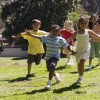 “Many parents are concerned about rising rates of childhood obesity. It’s important to keep a healthy perspective on the situation and not overreact with overly restrictive approaches that can do more harm than good. One way to promote healthy weights in children is to help them to be physically active.” This 2-page Family Album Radio transcript was written by Linda Bobroff, and published by the UF Department of Family Youth and Community Sciences, September 2012.
“Many parents are concerned about rising rates of childhood obesity. It’s important to keep a healthy perspective on the situation and not overreact with overly restrictive approaches that can do more harm than good. One way to promote healthy weights in children is to help them to be physically active.” This 2-page Family Album Radio transcript was written by Linda Bobroff, and published by the UF Department of Family Youth and Community Sciences, September 2012.
http://edis.ifas.ufl.edu/fm252
Bone Health (FAR8039/FM254)
 “When planning your family meals, you probably try to make sure your children get enough calcium and vitamin D, perhaps including a fresh cup of milk. Since milk is full of calcium, vitamin D, and other important nutrients, it’s one of the best foods for building strong bones. People who don’t get enough calcium or vitamin D are at risk for osteoporosis: weak bones that are more likely to fracture.” This 2-page Family Album Radio transcript was written by Jacob Young and Jennifer Hillan, and published by the UF Department of Family Youth and Community Sciences, September 2012.
“When planning your family meals, you probably try to make sure your children get enough calcium and vitamin D, perhaps including a fresh cup of milk. Since milk is full of calcium, vitamin D, and other important nutrients, it’s one of the best foods for building strong bones. People who don’t get enough calcium or vitamin D are at risk for osteoporosis: weak bones that are more likely to fracture.” This 2-page Family Album Radio transcript was written by Jacob Young and Jennifer Hillan, and published by the UF Department of Family Youth and Community Sciences, September 2012.
http://edis.ifas.ufl.edu/fm254
Healthy Eating: Fluids (FCS8569/FY070)
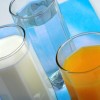 More than one-half of an adult human body weight is water. Water brings nutrients to the cells in our bodies and removes waste. Our bodies cannot function without an adequate water supply. This 2-page fact sheet was written by Linda B. Bobroff, Luisa Oliver-Cordero, and Emily Minton, and published by the UF Department of Family Youth and Community Sciences, 10. http://edis.ifas.ufl.edu/fy070
More than one-half of an adult human body weight is water. Water brings nutrients to the cells in our bodies and removes waste. Our bodies cannot function without an adequate water supply. This 2-page fact sheet was written by Linda B. Bobroff, Luisa Oliver-Cordero, and Emily Minton, and published by the UF Department of Family Youth and Community Sciences, 10. http://edis.ifas.ufl.edu/fy070
Alimentacion Saludable: Liquidos (FCS8569Span/FY071)
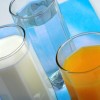 Más de la mitad del peso del cuerpo humano adulto, es agua. El agua transporta nutrientes a las células en nuestros cuerpos y remueve los residuos. Nuestros cuerpos no podrían funcionar sin una fuente de agua adecuada. This 2-page fact sheet was written by Linda B. Bobroff, Luisa Oliver-Cordero, y Emily Minton, and published by the UF Department of Family Youth and Community Sciences, October 2012.
Más de la mitad del peso del cuerpo humano adulto, es agua. El agua transporta nutrientes a las células en nuestros cuerpos y remueve los residuos. Nuestros cuerpos no podrían funcionar sin una fuente de agua adecuada. This 2-page fact sheet was written by Linda B. Bobroff, Luisa Oliver-Cordero, y Emily Minton, and published by the UF Department of Family Youth and Community Sciences, October 2012.
http://edis.ifas.ufl.edu/fy071
High Blood Pressure: What You Need to Know (FCS8638/FY199)
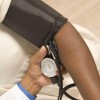 High blood pressure, also called hypertension, increases your health risks. If you have high blood pressure, you have a higher chance of getting heart disease or kidney disease or of having a stroke. This 4-page fact sheet was written by Linda B. Bobroff, and published by the UF Department of Family Youth and Community Sciences, October 2012.
High blood pressure, also called hypertension, increases your health risks. If you have high blood pressure, you have a higher chance of getting heart disease or kidney disease or of having a stroke. This 4-page fact sheet was written by Linda B. Bobroff, and published by the UF Department of Family Youth and Community Sciences, October 2012.
http://edis.ifas.ufl.edu/fy199
Sleep Needs for Children (FAR0604/FM181)
 “Does your school-aged child complain about being sleepy during the day, doze off in class, or yawn a lot? Does he or she go to bed late or have trouble falling asleep? If so, your child may not be getting enough sleep.” This 2-page Family Album Radio transcript was written by Suzanna Smith, and published by the UF Department of Family Youth and Community Sciences, October 2012.
“Does your school-aged child complain about being sleepy during the day, doze off in class, or yawn a lot? Does he or she go to bed late or have trouble falling asleep? If so, your child may not be getting enough sleep.” This 2-page Family Album Radio transcript was written by Suzanna Smith, and published by the UF Department of Family Youth and Community Sciences, October 2012.
http://edis.ifas.ufl.edu/fm181
Healthy Living: Beating Barriers to Physical Activity (FCS8818/FY883)
 Being active can help you function better and maintain your independence. It also can reduce your risk for getting some diseases, such as diabetes, and help you manage health problems you may already have. If you’re not active, what’s stopping you from getting started? Read on to learn how to overcome some common barriers! This 2-page fact sheet was written by Jennifer Hillan and Linda B. Bobroff, and published by the UF Department of Family Youth and Community Sciences, September 2012.
Being active can help you function better and maintain your independence. It also can reduce your risk for getting some diseases, such as diabetes, and help you manage health problems you may already have. If you’re not active, what’s stopping you from getting started? Read on to learn how to overcome some common barriers! This 2-page fact sheet was written by Jennifer Hillan and Linda B. Bobroff, and published by the UF Department of Family Youth and Community Sciences, September 2012.
http://edis.ifas.ufl.edu/fy883
Black-tailed Mosquito Culiseta melanura (Coquillett) (Insecta: Diptera: Culicidae) (EENY536/IN950)
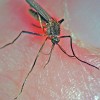 The black-tailed mosquito is unusual because it overwinters as larvae while most mosquito species overwinter as either adults or eggs. Culiseta melanura is important because of its role in the transmission cycle of eastern equine encephalitis virus and potentially West Nile virus: because adult female Culiseta melanura primarily take their blood meals from birds, they are responsible for transmitting eastern equine encephalitis virus between birds. This 6-page fact sheet was written by Eva Buckner, Angelique Showman, and C. Roxanne Connelly, and published by the UF Department of Entomology and Nematology, September 2012.
The black-tailed mosquito is unusual because it overwinters as larvae while most mosquito species overwinter as either adults or eggs. Culiseta melanura is important because of its role in the transmission cycle of eastern equine encephalitis virus and potentially West Nile virus: because adult female Culiseta melanura primarily take their blood meals from birds, they are responsible for transmitting eastern equine encephalitis virus between birds. This 6-page fact sheet was written by Eva Buckner, Angelique Showman, and C. Roxanne Connelly, and published by the UF Department of Entomology and Nematology, September 2012.
http://edis.ifas.ufl.edu/in950